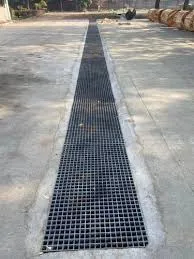
-
 Afrikaans
Afrikaans -
 Albanian
Albanian -
 Amharic
Amharic -
 Arabic
Arabic -
 Armenian
Armenian -
 Azerbaijani
Azerbaijani -
 Basque
Basque -
 Belarusian
Belarusian -
 Bengali
Bengali -
 Bosnian
Bosnian -
 Bulgarian
Bulgarian -
 Catalan
Catalan -
 Cebuano
Cebuano -
 China
China -
 China (Taiwan)
China (Taiwan) -
 Corsican
Corsican -
 Croatian
Croatian -
 Czech
Czech -
 Danish
Danish -
 Dutch
Dutch -
 English
English -
 Esperanto
Esperanto -
 Estonian
Estonian -
 Finnish
Finnish -
 French
French -
 Frisian
Frisian -
 Galician
Galician -
 Georgian
Georgian -
 German
German -
 Greek
Greek -
 Gujarati
Gujarati -
 Haitian Creole
Haitian Creole -
 hausa
hausa -
 hawaiian
hawaiian -
 Hebrew
Hebrew -
 Hindi
Hindi -
 Miao
Miao -
 Hungarian
Hungarian -
 Icelandic
Icelandic -
 igbo
igbo -
 Indonesian
Indonesian -
 irish
irish -
 Italian
Italian -
 Japanese
Japanese -
 Javanese
Javanese -
 Kannada
Kannada -
 kazakh
kazakh -
 Khmer
Khmer -
 Rwandese
Rwandese -
 Korean
Korean -
 Kurdish
Kurdish -
 Kyrgyz
Kyrgyz -
 Lao
Lao -
 Latin
Latin -
 Latvian
Latvian -
 Lithuanian
Lithuanian -
 Luxembourgish
Luxembourgish -
 Macedonian
Macedonian -
 Malgashi
Malgashi -
 Malay
Malay -
 Malayalam
Malayalam -
 Maltese
Maltese -
 Maori
Maori -
 Marathi
Marathi -
 Mongolian
Mongolian -
 Myanmar
Myanmar -
 Nepali
Nepali -
 Norwegian
Norwegian -
 Norwegian
Norwegian -
 Occitan
Occitan -
 Pashto
Pashto -
 Persian
Persian -
 Polish
Polish -
 Portuguese
Portuguese -
 Punjabi
Punjabi -
 Romanian
Romanian -
 Russian
Russian -
 Samoan
Samoan -
 Scottish Gaelic
Scottish Gaelic -
 Serbian
Serbian -
 Sesotho
Sesotho -
 Shona
Shona -
 Sindhi
Sindhi -
 Sinhala
Sinhala -
 Slovak
Slovak -
 Slovenian
Slovenian -
 Somali
Somali -
 Spanish
Spanish -
 Sundanese
Sundanese -
 Swahili
Swahili -
 Swedish
Swedish -
 Tagalog
Tagalog -
 Tajik
Tajik -
 Tamil
Tamil -
 Tatar
Tatar -
 Telugu
Telugu -
 Thai
Thai -
 Turkish
Turkish -
 Turkmen
Turkmen -
 Ukrainian
Ukrainian -
 Urdu
Urdu -
 Uighur
Uighur -
 Uzbek
Uzbek -
 Vietnamese
Vietnamese -
 Welsh
Welsh -
 Bantu
Bantu -
 Yiddish
Yiddish -
 Yoruba
Yoruba -
 Zulu
Zulu
frp clarifier
Understanding FRP Clarifiers A Comprehensive Overview
Understanding FRP Clarifiers A Comprehensive Overview
One of the primary advantages of FRP clarifiers is their exceptional durability. Unlike traditional steel or concrete structures, FRP clarifiers are less prone to rust and decay. This resistance to environmental factors not only prolongs their lifespan but also reduces maintenance costs over time. The lightweight nature of FRP allows for easier installation and transportation, further making them a preferred choice in wastewater management.
frp clarifier

The functionality of FRP clarifiers relies on gravity and sedimentation principles. Wastewater flows into the clarifier, where heavier solids settle at the bottom, forming a sludge layer. The clarified water then rises to the surface and is directed out of the system for further treatment or discharge. Depending on the design, some FRP clarifiers are equipped with additional components, such as lamella plates, to enhance the sedimentation process, thereby increasing efficiency and reducing the footprint of the installation.
Moreover, FRP clarifiers can be customized to meet specific operational needs. They can be engineered to accommodate varying flow rates and can be integrated into existing treatment systems seamlessly. Many industries, including petrochemical, food and beverage, and mining, have adopted FRP clarifiers due to their versatility and reliability.
In conclusion, FRP clarifiers represent a significant advancement in wastewater treatment technology. Their combination of strength, longevity, and efficiency positions them as a crucial element in achieving sustainable and effective water management solutions. As industries continue to prioritize environmental stewardship, the adoption of FRP clarifiers will likely increase, paving the way for cleaner and safer waterways for future generations.









